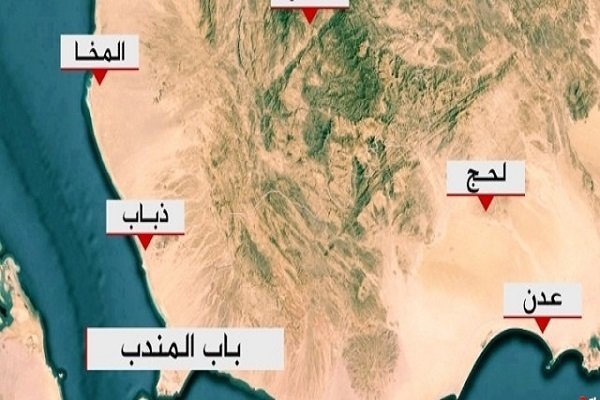Yemen still clings to its vital western coast, despite Saudis

TEHRAN - The Arab-aggressive coalition led by Saudi Arabia more than three years ago laid out a military invasion against the defenseless Yemeni people. According to human rights organizations, more than 30,000 Yemenis have been wounded to this day, while other millions have been displaced and are struggling to survive in the wake of the all-out Saudi assault.
Since the outbreak of the Yemeni War, from time to time, the poles of conflicts have shifted. For example, at one time, the Saudis put their efforts on occupying the city of Sana'a, the capital of Yemen, hoping they would take out the last resistance groups. At another time, the war centered on southern Yemen, especially in the province of Aden where eventually the invaders got to dominate a good part of the country.
Now, the clashes between the aggressive forces of Saudi Arabia and their allies against Ansarullah and the resistance Yemeni forces have entered a new phase on the west coast of the country, which has high strategic importance. The aggressive coalition led by Saudi Arabia has sought to gain control of the West Coast of Yemen since they failed to dominate Sana’a.
About a year ago Saudi Arabia and its allies, including the Sudanese, launched massive attacks on Yemen’s west coast, precisely on the Strait of Bab-el-Mandeb. Their goal was to take full control of the strategic strait. During these attacks, the Saudi regime succeeded in advancing in some parts of the strait, as well as along the coast of Mocha. However, Ansarullah and the Yemeni army inflicted devastating blows on the Saudi army during the past year and prevented them from dominating the west coast.
The issue of Yemeni West coast remains critical for the Saudis. What has made the West coast extremely important for the Saudis at this time is that they have now begun to engage in hostile offensive naval operations after a series of defeats in air, land and artillery operations. The Saudis know very well that the maritime lines on the Yemeni coast will give them an upper hand in the war and the west coast, unlike many other areas in the country, is not mountainous. Aerial attack in this region is easier.
Another factor is the strategic location of the Bab Al-Mandeb strait on the Yemeni west coast, which is of high significance for the Saudis. For the past three years, efforts to take full control of the Strait of Bab-el-Mandeb have failed. After the Suez Canal, the strait is the world’s most important. It connects the Red Sea to the Gulf of Aden, as well as Southwest Asia to East Africa and Europe. It also acts as a strategic link between the Indian Ocean and the Mediterranean Sea via the Red Sea and the Suez Canal, while its blue borders are shared between three countries: Yemen, Eritrea, and Djibouti.
In 2006, an estimated 3.3 million barrels (520,000 m3) of oil passed through the strait per day, out of a world total of about 43 million barrels per day (6,800,000 m3/d) moved by tankers. Every year, about 21,000 ships carrying various types of goods pass through Bab Al-Mandeb as well.
Based on estimates from the US Energy Information Administration in 2013, the amount of oil that crossed the Strait daily was about 3.8 million barrels, which is equivalent to six percent of global oil trade.
The Saudis have also hatched a plan to dominate the strategic port of Al Hudaydah which is located 200 km from the capital city of Sana'a. It is the second largest Yemeni business port after the port of Aden and is of great importance because of its export and import facilities and its proximity to international transportation routes. Today, much of Yemen’s food enters the country from the port. The siege of this port would bring about food and economic crises for Sana’a and other provinces under the control of the Ansarullah.
In recent months, the Saudis have begun to shut down the port. Maria Zakharova, Russian foreign ministry spokesperson, has even said if the port is successfully shut down, it will spread chaos and benefit the terrorist groups such as al-Qaeda and ISIS. The catastrophic humanitarian situation in the country also will worsen.
In any case, despite the fact that the Saudis, along with their allies, have progressed somewhat on the western coast of Yemen, they still have not managed to fully control the strategic areas of the coast. Just a few days ago, about 200 Saudi mercenaries in Yemen died, an indication of that Yemeni forces are determined to prevent the collapse of the west coast.
